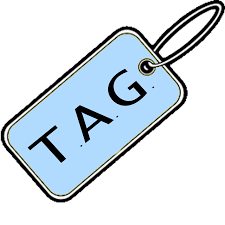
Why have ticket categories?
Ticket categorization is the second most important component to any helpdesk ticketing system (the first most important being ticket-tracking itself!). Categories can be used to evaluate and optimize your help desk’s ticket-handling process.
Some examples of how category tags can make a difference for your IT help desk:
By Department— Frequently, departments within a business have specific requirements, needs and expectations of how they use their technology. For instance, accounting departments have much different technical requirements—software support, hardware needs and response times on tickets than the marketing team. In short, tagging tickets with a department tag can help direct a better service response.
By Priority— Not all tickets are created equal. Most frequently, tickets are worked based on how vital a fix is to get a user back to work. Tickets submitted as a low priority are issues that do not immediately impact work stoppage. Low priority tickets may be setting up drivers for a new printer, helping someone understand functionality of common software. High priority tickets, on the other hand, are normally issues that directly affect a work stoppage for one to many employees, ranging from basic password resets to much more complex outages.
By Specific Problem— One of the best ways for your IT help desk to log tickets in their ticketing database is to tag tickets in specific problem categories. If your help desk has good documentation, they should be able to utilize specific documentation when looking up your user’s issue. Having tags associated with certain types of problems allows a help desk technician to quickly resolve issues by easily identifying proven steps to fix your user problem.
By IT Help Desk Technician—many help desks tag which technician was working on your user’s ticket so that in the event of a problem or a follow up, that user can be directed back to the tech that helped them in the first place. Tagging technicians with their worked tickets also gives them accountability for their performance. If users are happy with a tech’s work (or dissatisfied), help desk managers will be able to give appropriate feedback. Managers are also able to better identify if individual technicians are struggling or are in need of further IT help desk training when looking at ticket data if they can review or quality check the tickets they worked.
Here are some of the most common categories IT help desks use to classify your issues (Note: terminology varies department to department, but most help desks should have documentation to cover each of these topics):
Desktop Hardware
Desktop Software
Server
Networking
New Employee Onboarding
Website
Change Request
How can category tags be problematic for most IT help desks?
When evaluating how many help desks track tickets, one glaring problem is that the majority fail to consistently tag tickets. While almost all automatically tag a technician to a worked ticket, many (nearly 78%!) fail to tag tickets by category. Here is an example of one help desk that I had evaluated last week. What was striking to me was that 84% of tickets were NOT tagged.
The help desk manager had little clue of which specific issues were a big problem for his help desk team. Likewise, the inconsistency of tags resulted in poor documentation on how to resolve common issues. Few help desk technicians used the documentation and hardly anyone ended up giving users quicker resolution times—and the main reason was simply because they weren’t tagging tickets!
When looking at the length of time a ticket took to resolve verse whether it was tagged, it was clear that tagging categories makes a big difference:
When I went to evaluate that same help desk’s user satisfaction scores, what I saw was that when tickets were untagged, users were less happy with service. In fact, users were almost 2Xs less satisfied with ticket resolution in tickets that had no tags compared to when tickets were tagged with an issue category!
MY BIGGEST CONCERN
The biggest issue with not having an easy way to assess ticket type is that your help desk will continue to repeat the same problems over and over again. Realize that even if your help desk manager is a bright guy or gal, they won’t be able to process streams of data like a computer. They need summaries or visual trends to identify problems. If your help desk tickets aren’t categorized, you’ll be left with a pool of tickets with no clear way how to direct your help desk operations.
Are you sure your IT help desk is tracking and optimizing their ticketing process with you and your users in mind? Contact us TODAY for a free IT help desk health assessment.
Leave a Comment
Your email address will not be published. Required fields are marked *